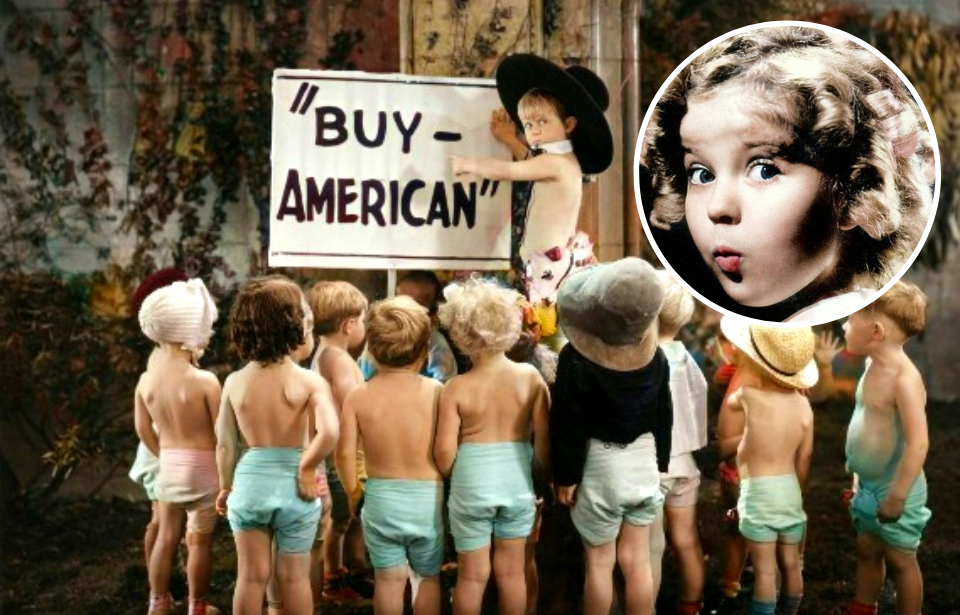The Baby Burlesks of the early film era have many modern people scratching their heads and grimacing. “How was this allowed?” is a question that often accompanies the discovery of the strange short “comedy” series. One must remember that Hollywood was a very different industry in its early years. Child actors of the 1930s could be used to portray disturbing adult characters despite their age and innocence. It’s possible that none of these children were more exploited and taken advantage of than Shirley Temple – a star of the Baby Burlesks.
What were the ‘Baby Burlesks’?
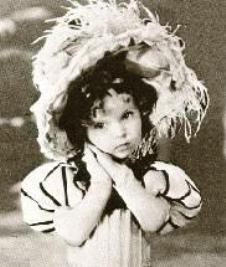
The Baby Burlesks were several short films intended to be comedies. They exclusively featured child actors. Released during the 1930s, they were created by Educational Pictures, a film distribution company originally founded in 1916. The film series’ most famous child actor, the one-and-only Shirley Temple, signed a contract with the company in 1932 at the age of three, making the Baby Burlesks her first official gig.
There were eight Baby Burlesks in total, and in each, young children would take on the roles of adult characters. The films were often short satires of major Hollywood hits, and they largely portrayed the trials and tribulations of adult life through child performers. With their hyper-sexualization of children as drunks and call girls wearing revealing and suggestive costumes, the series was a product of its time and did not age well.
No Hays Code meant no regulations whatsoever
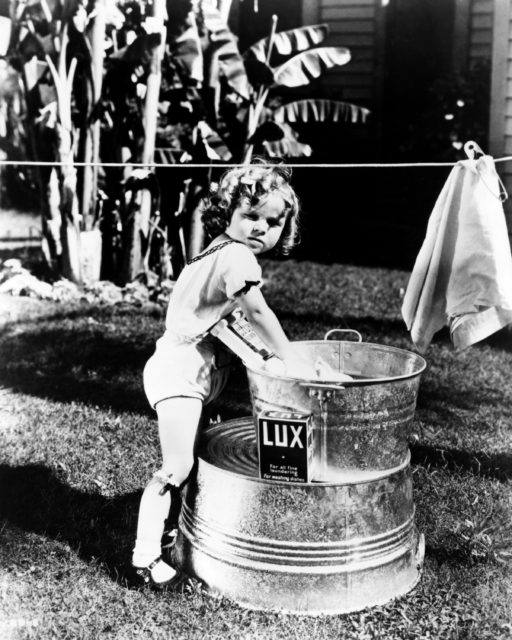
When the Baby Burlesks were filmed, Hollywood as an industry was still in its infancy. Film was just starting its transformation with the introduction of sound and the first “talkie” being released in 1927. As the medium was still being developed, there hadn’t been any rules or regulations established to protect the rights of the actors, to define proper working conditions, or to provide guidelines of what was (and was not) acceptable to show on-screen.
The Hays Code was developed by William H. Hays, the 1934 president of the Motion Pictures Producers and Distributors of America (MPPDA). The Code was a set of guidelines that outlined what was allowed to be portrayed in film. It was largely written with conservative Catholic undertones, with rules stating that the content must show the audience that evil is wrong and good is right.
The Hays Code was originally created in 1930 but was not strictly enforced until 1934. As such, the Baby Burlesks were filmed in what is known as the Pre-Code Era. This gave the producer, Jack Hays, and director, Charles Lamont, the freedom to have the child actors do and say anything they wanted, including exploitative actions.
Temple played an escort in ‘Polly Tix in Hollywood‘
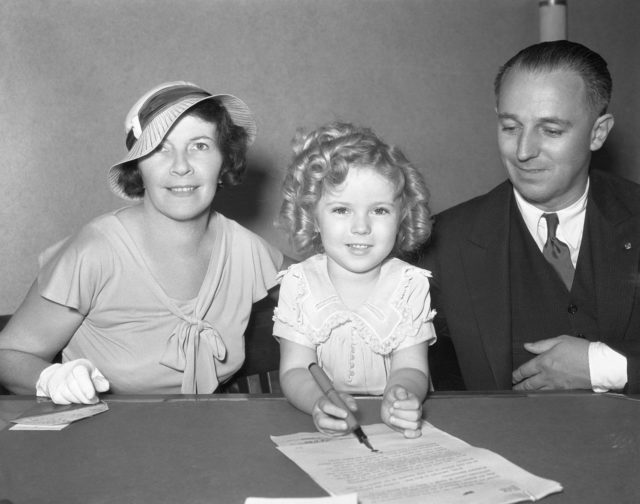
In one of the Baby Burlesks, called Polly Tix in Hollywood, Temple plays what is certainly insinuated as an escort. The plot has her visiting with a senator, played by another child actor, and “entertaining” him. When we first see Temple, she is sitting in a bra filing her nails, like a mistress waiting for her next job. When she finally meets with the senator, she saunters over to him with pearls around her neck and her hands on her hips.
Within the first 30 seconds of the two characters meeting, Temple wraps her arms around his shoulders and plants two kisses on his lips. Later, she calls herself “expensive” before being attacked by another child senator. Temple was just four years old when she starred in this film, and the role exposed her to her first on-screen kiss. The hyper-sexualization and the accompanying storyline are lost on the child stars who play these adult roles, as they’re simply acting out the parts the adults around them are expecting them to perform.
And again in ‘War Babies‘
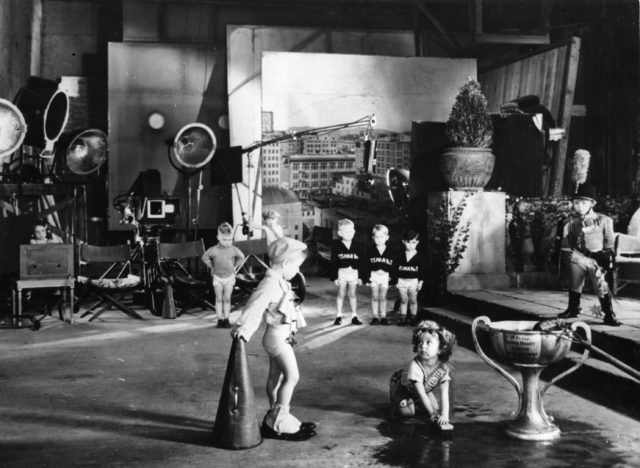
In another Baby Burlesk called War Babies, we see a group of child soldiers, wearing nothing but diapers with oversized safety pins and helmets, gathering at a bar. Again, Temple is given the role of the hired escort, dancing on stage for the soldiers to watch. During her seductive dance, she wears a loose-fitted top that slips off her shoulder to show some skin.
Temple also exchanges kisses for lollipops and calls one of the boy soldiers “mon cher Capitan.” Throughout the entire film, the soldiers call Temple’s character “baby,” which in reality she was. This Baby Burlesk was meant to be a spoof of the WWI-era silent film, What Price Glory?, directed by Raoul Walsh. However, the humor intended for the adult audience came at the price of taking advantage of these children and forcing them to perform in a sexual manner.
Other problems with the ‘Baby Burlesks’
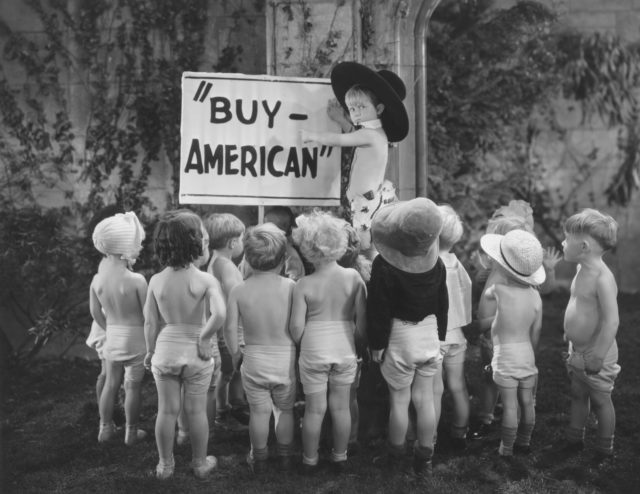
As bad as the sexualization of toddlers for a quick laugh was, there were other things about the Baby Burlesks that were just as bad. Some of the content in other titles was centered on racist tropes. For example, Kid in Africa posed white children as the “good guys” against African American children who played “savages” holding bows and arrows.
With no code, the working conditions of the children were also appalling. When she was older, Temple recalled director Lamont saying to the children, “This isn’t playtime, kids, it’s work.” If the children did not behave, Lamont threatened them with “a soundproof black box, six feet on each side, containing a block of ice. An offending child was locked within this dark, cramped interior and either stood uncomfortably in the cold, humid air or had to sit on the ice. Those who told their parents about this torture were threatened with further punishment.”
Temple, between three and five years old, tried to warn her mother of the threats Lamont used to taunt the children. However, she was met with an accusation that she had made the whole thing up. No one would believe the children even if they tried to explain, so Lamont didn’t have to stop at threats to get the shots he wanted. He also wouldn’t warn the children of certain stunts set up in the scenes.
Again, in Kid in Africa, Lamont “concealed a tripwire to fell the ‘savages’ played by African American children. In filming another scene, a terrified ostrich pulling Shirley and another child in a surrey careened wildly about the set before crashing into a wall.” The children were battered, bruised, and expected to continue on with their labor despite their poor working conditions.
Temple went on to condemn her first gig
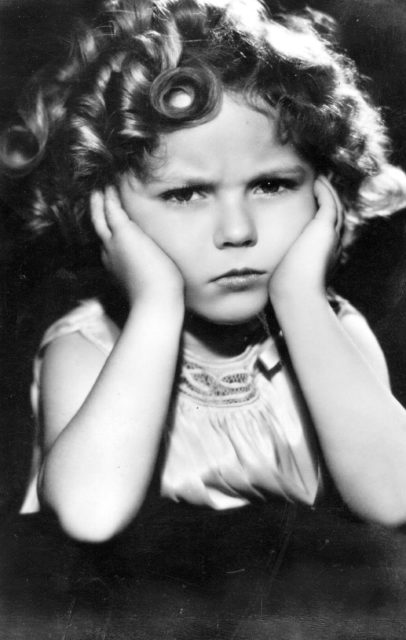
As Temple grew older, her interest in maintaining her acting career waned. She took on a few roles as a teenager and dabbled in radio, but she eventually stepped away from Hollywood in 1967 to start a career in politics. Nonetheless, her history as one of the world’s most famous child actors stayed with her throughout her life.
More from us: Shirley Temple: From Child Star To American Diplomat
The Baby Burlesks are looked upon poorly today, and rightfully so. Temple herself condemned the beginnings of her child acting career. In her autobiography, Child Star, she wrote that the Baby Burlesks were “a cynical exploitation of our childish innocence.” All of the children involved in the Baby Burlesks were taken advantage of in some way.
